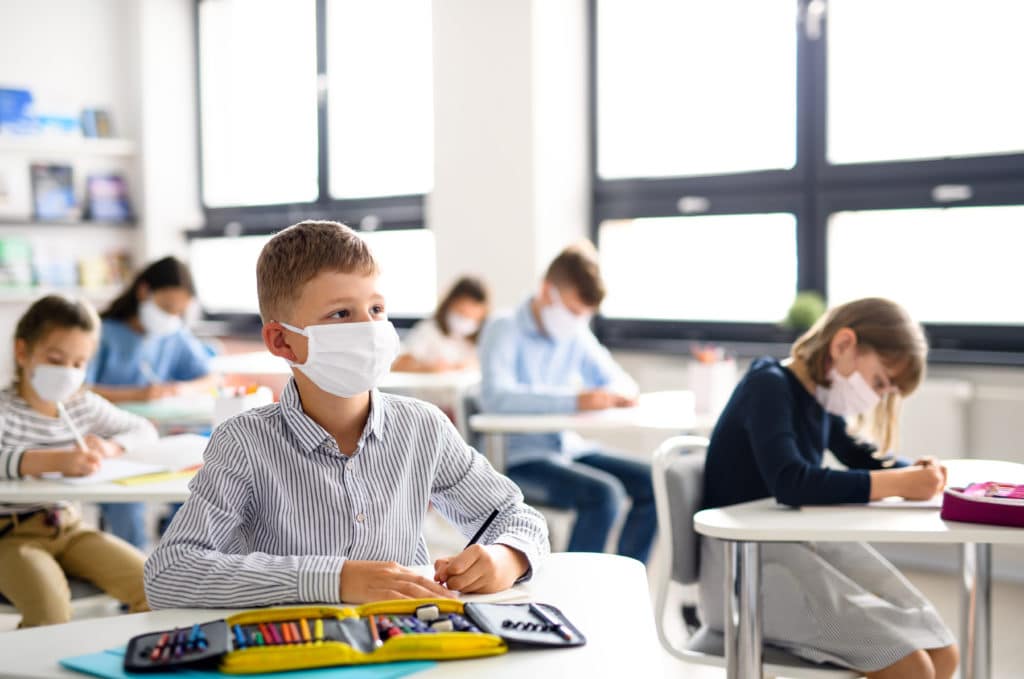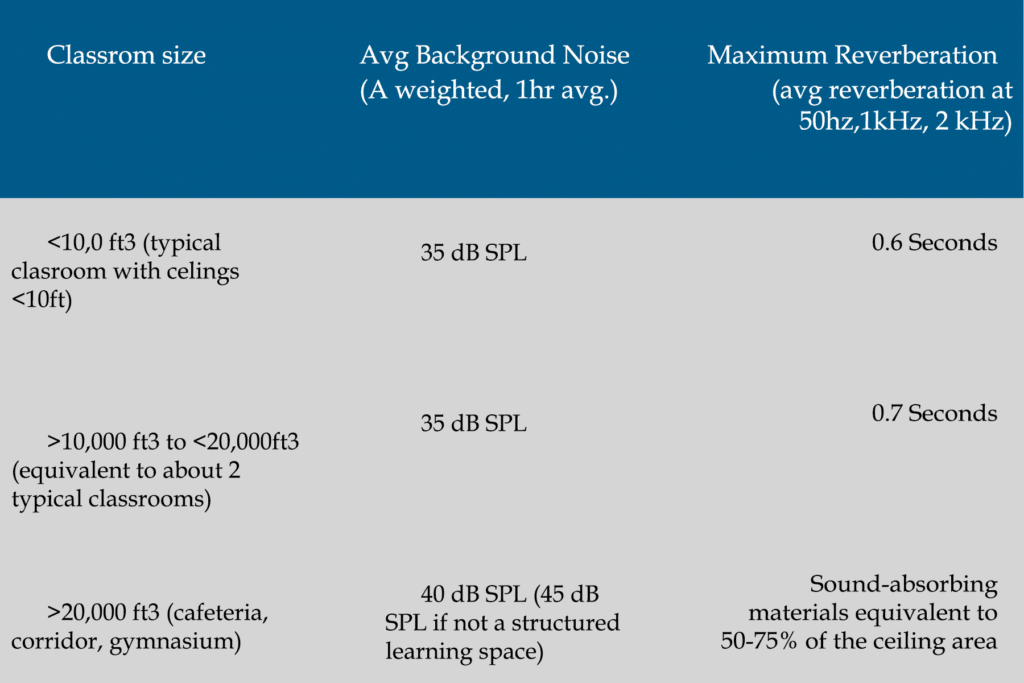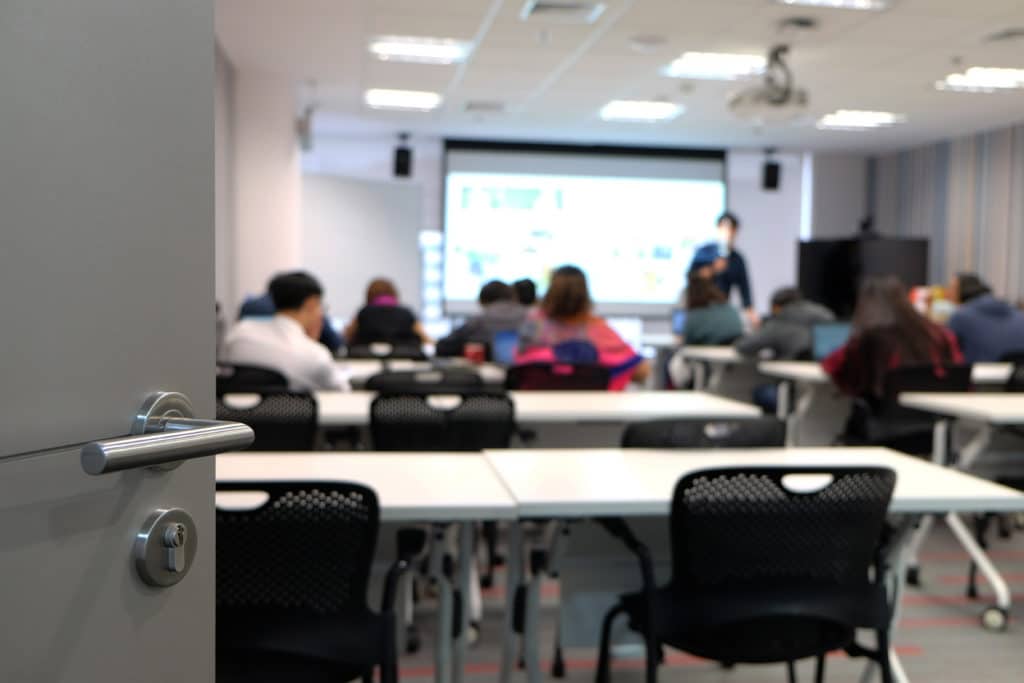
Children in the classroom need more than just a qualified teacher and a desire to learn. The most significant factor in learning Is communication. We connect through our senses, and even more so sight and sound. Children can not properly engage unless they can hear and see the instructor.
Classroom designs allow children to easily see the teacher; bright lighting, large screens, and/or whiteboards. But very few classrooms have conditions that cater to better listening conditions to let students hear the teacher’s voice without interference and signal degradation. These eight facts below address hearing-related issues that are pertinent for successful learning.
1. Advantage in ages
Adolescents need quieter classrooms to understand information adequately as well as adults. Children below the age of 13 cannot process speech in background noise like adults can. Young children do not have the developed language skills to fill in blanks when an ending, new word, or short phrase is missed.
2. Is it “Close enough?”
There is a definite advantage to kids within the “ideal listening range” when it comes to hearing in a noisy environment. This range generally is within about six feet from the teacher’s mouth. We know that “sound degrades over distance.” If you have ever tried to hear someone on the other side of a restaurant, you know that it can be more complicated than sitting at the table across from them. The same sound degradation exists in the classroom, and listening takes more work in noise and distance.
Students in the back half of the classroom are generally not as engaged or do not learn as actively as those towards the front. Communication across distance is part of everyday listening situations.

3. Sound Bouncing, the rebound effect
Room acoustics can impact how well sound travels, and in the classroom, there is no exception. Difficulties in hearing within the classroom can occur when reverberation (sound bouncing off hard surfaces in a room) transpires. The echo is most noticeable in a gym or cafeteria. Still, it also very much occurs in most classrooms—vinyl floors, hard desks, large windows, and more play a role in how sound reflects.
Reverberation causes the longer vowel sounds to reflect and cover-up shorter consonant sounds, blurring speech, and reducing clarity. The echo that is slightly difficult for adults will cause significant interference for younger children. The effects of blurred speech increases over distance and children suffer the most from this obstacle.
4. The gruesome Twosome
When reverberation and excessive background noise occur, the two make the understanding of speech even more complicated. These two limiting factors, when combined, can have drastic effects on student’s learning and test scores. As of 2002, there are national standards (see Table 1) for just how reverberation and a noisy classroom can affect a child’s learning.

Table 1. Summary of standards for how noisy a classroom can be before children’s’ hearing will be adversely affected. Adapted from Sutherland & Lubman (2004)
5. Prolonged reading skills
Children taught in noisy class conditions, have a more difficult time with auditory discrimination, and have lower reading scores in several cases. When acoustic treatment was provided reducing the classroom’s noise level to suitable levels; reading test scores remarkably improved. Constant noise exposure is linked to reading deficits, regardless of parent education or family socioeconomic status.

6. As one goes up, the other goes down
The basis of learning is presenting a piece of new and demanding information and having to problem-solve and apply further details adequately. A student who gives up in frustration when presented with new data will not be a successful learner. When the noise in a classroom increases, children give up trying to solve a problem quicker than those educated in acoustically appropriate classes. When required to listen in sound for more extended periods, students become less motivated to pay attention and process information.
Children do not get better at listening in noisy learning environments; they don’t learn to tune in; instead, tune out or even worse they struggle.
7. Consider possible hearing loss for every child
Once hearing loss reaches 25 dBHL, it is considered to be a hearing loss. However, a 25dB hearing loss is relative to plugging your ears with your fingers! Schools are often screened at 20 – 25dBHL. (For more information on the benefits of having your child’s hearing tested in clinic vs. in school check out this article).
Any degree of hearing loss is too much for a noisy classroom. Listening at a distance, masking of speech due to noise, and reverberation or echo all have compounding effects on a child’s speech understanding with hearing loss.
Hearing aids can be a useful tool for amplifying certain sounds. But hearing aids, although some have excellent background noise cancellation technology, amplify all sounds. The addition of an amplified mic, in which the teacher wears a microphone and his/her voice goes directly to the student’s hearing aids, cochlear implants, or a desktop speaker will yield the most significant results in overcoming speech in noise difficulties.
8. What is good enough?
Studies show that when the teacher’s voice is 15 dB louder than background noise and have low reverberation, reverberation, children learn best. Today’s students need to discuss in small groups and work cooperatively as part of an interactive and dynamic curriculum.
National Standards are now specified at what’s considered “good enough” (acoustical Society of America/ANSI standard [S12. 60-2002]) and should guide the design of new and remodeled schools. The sound shouldn’t leak through from room to room, halls, and playgrounds, and hard surfaces should be softened when possible. Background noise sources like the heating and air conditioning systems need to be identified and addressed. Even costly changes are a bargain compared to the price of lost learning.
